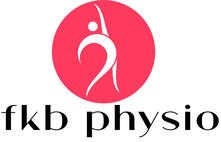"Do you actually even do 'physio' any more?"
I have been asked this question a lot in recent years, since changing how I practice. What my sessions tend to look like (lots of talking, moving, not much lying on the bed receiving treatment) is not seen as ‘physiotherapy’ by most.
Physiotherapy to me = getting people back to doing what they want to be doing. Being able to do activity that is meaningful to them, and what they enjoy.
It is teaching people to understand better how to manage their situation.
This may involve looking at lifestyle factors, activity levels and coping strategies, and helping patients to develop confidence end self-efficacy by taking an active role in their rehabilitation.
It may also, and often does, involve some sort of exercise as a step towards building enough capacity to return to full function.
While these things may sound unimportant, it is often these seemingly small factors that lead to a poor outcome.
A common story is someone suddenly doing too much, and becoming injured; pulling right back, and doing very little; trying to do what they could before once the pain is gone, and the pain returning; assuming the injury is very bad, becoming even more inactive; developing more subsequent issues.
The missing link here is the graded return to activity, something which may need to be managed quite carefully.
This is made more complex in the way that people are often managed by the healthcare system, as they are often told to ‘be careful’ ‘look out for their back when lifting’ ‘avoid bending’ ‘stay away from jumping’, to name a few.
These unhelpful narratives lead to a fear of movement that tends to serve people poorly in their recovery, despite being well-intentioned.
It is not actually helpful to tell people to be extra careful about how they move, though that may sound counter-intuitive! Research has found people with back pain move more rigidly and more carefully than those without pain.
This ‘hyper-vigilance’ and fear of movement is completely understandable but unfortunately often a barrier to recovery.
The missing link in a persistent injury is rarely that the person hasn’t found the right manual therapy intervention, acupuncture, dry needling, joint cracking, perfect exercise, etc, but more likely that a more holistic view of their situation is missing.
If you feel you may benefit from this approach, please feel free to get in touch!

